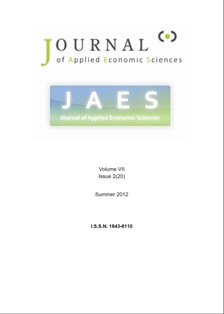MACROECONOMIC ASPECTS OF REAL EXCHANGE RATE VOLATILITY IN THE CENTRAL EUROPEAN COUNTRIES
MACROECONOMIC ASPECTS OF REAL EXCHANGE RATE VOLATILITY IN THE CENTRAL EUROPEAN COUNTRIES
Author(s): Rajmund MirdalaSubject(s): Economy
Published by: Reprograph
Keywords: exchange rate volatility; economic growth; economic crisis; vector autoregression; variance decomposition; impulse-response function
Summary/Abstract: Exchange rate unexpected fluctuations determine economic development of countries the way quite similar to any other type of exogenous shocks. Unpredicted volatility in exchange rate short-run path affects macroeconomic performance the way that may be a subject of academic as well as economic policy discussions. Overall exposure of countries to negative implications of exchange rate volatility represents one of the areas of empirical investigations related to fixed versus flexible exchange rate dilemma. Rigorous analysis of various aspects of exchange rate fluctuations in terms of macroeconomic performance causal effects is considered to be a crucial outcome of not only exchange rate determining potential but also key information for exchange rate policy or policy decisions related to exchange rate regime shifts. In the paper we analyze macroeconomic aspects of the real exchange rate volatility in the Central European countries. VAR (vector autoregression) methodology is implemented to estimate effects of the real exchange rate fluctuations on the selected main macroeconomic indicators variability. Structural exogenous shocks are identified by applying the Cholesky decomposition of variance-covariance matrix of the reduced-form VAR residuals. Variance decomposition and impulse-response functions of selected endogenous variables to positive one standard deviation real exchange rate shock are computed for two models covering time series for two periods - 2000-2007 (model A) and 2000-2011 (model B) to determine the role of economic crises on presented results (changes in the exchange rate determining potential during the crisis period are expected to be revealed). Ordering of the endogenous variables in both models is also considered to check the robustness of the empirical results of the estimated econometric model in the selected group of countries.
Journal: Journal of Applied Economic Sciences (JAES)
- Issue Year: VII/2012
- Issue No: 20
- Page Range: 163-178
- Page Count: 16
- Language: English

